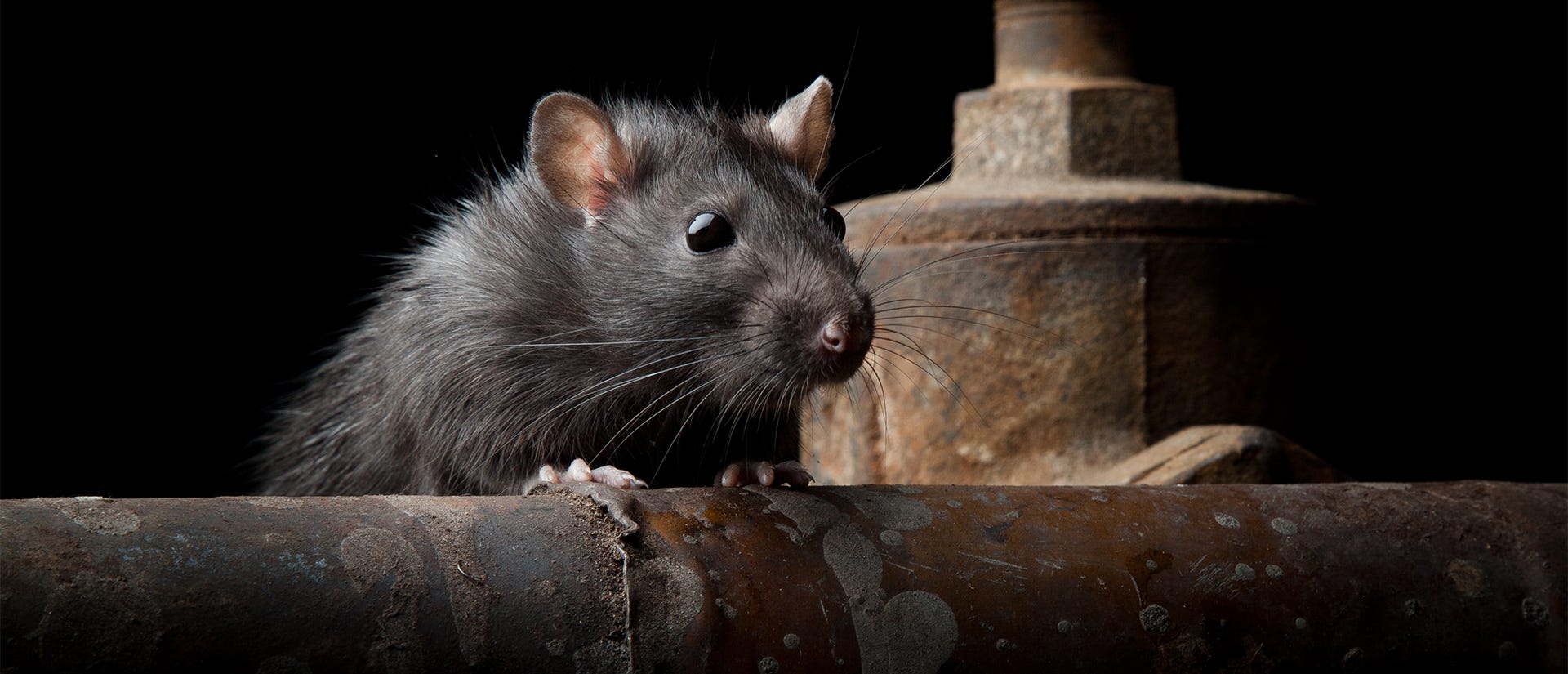
Rodents are one of the major causes of damage to crops and electrical systems throughout the world. With their ever-growing teeth, rodents, such as rats and mice, are constantly gnawing on things and are able to chew away at power lines that provide people with electricity. As carriers of contagious diseases and hosts of infectious parasites, rodents also contaminate food supplies and spoil gardens throughout Third World and industrialized nations.
With their ability to crawl through pipes and slip into hard-to-reach areas, rodents come into contact with sensitive circuitry that connects to power grids in towns and cities everywhere. Using their sharp incisors, the critters gnaw at electrical wires and insulation materials, causing short circuits and sparking fires in the process. The older a rodent grows, the stronger its teeth become, hence the need to chew on hard objects.
As carriers of pests, rodents bring along fleas, mites, and ticks with each infestation. Rodents are also carriers of diseases, and there are many that are transmittable to humans, pets, and farm animals; examples include leptospirosis, salmonella, tapeworms, and tuberculosis. The rodents are also contagious for what they leave behind, like urine, droppings, and saliva — all of which can be disease-ridden themselves.
Efforts to Stem Rodent Infestation
Rats and mice have also been responsible for major damage to store supplies, home furnishings, and even buildings. Locations and items especially susceptible to damage include:

When rats bite into a bag of grains, flour, sugar, or other powdery substances, it can cause all the contents to leak. Furthermore, entire stacks of bags can fall to the floor after persistent gnawing at the support frames. Worst of all, silos or storage spaces themselves can sink or tumble over when their support has been demolished by rodents.
Traditionally, rodent control experts have sought to eradicate rodent populations with the use of baited, strategically placed traps. Recently, efforts at stemming infestations have been expanded to a system known as ecologically based rodent management (EBRM), which takes into account the habitats and agricultural systems of rats and mice. According to wildlife researcher Dr. Grant Singleton of the International Rice Research Institute (IRRI), EBRM is an effort to curtail vital resources—such as food and nesting places—that rodents need to survive throughout each year. While the system would still rely to some degree on rodenticides, research will continue to make these chemicals more environmentally safe and hazard-free toward non-target animals.

Rodent Attacks on Agriculture
Rodents destroy at least one percent of the world's cereal crops on an annual basis. In many Third World nations, the number is upward of 3-5 percent. As consumers of vitamin and protein-rich foods, rodents often feed on the crops’ embryo, stripping away germination capabilities and nutrients in the process. The creatures are notorious for contaminating food supplies, and one of their primary targets is grain.Rats consume roughly 25 grams of paddy or rice grain on a daily basis, while mice eat approximately 3-4 each day. While devouring these human food supplies, rats leave behind urine, fecal, and pathogenic deposits that render the food inedible for humans.
Rice supplies are primarily attacked by three types of rodents: the rice-field rat, the black rat, and the bandicoot rat. Populations of such rats are most commonly indicated by mud tracks and levee holes. Infestations of these creatures have been responsible for major loss to rice crops as well as post-field supplies.
Of the aforementioned species, the rice-field rat is most tied to the growth of rice crops. Breeding typically occurs in advance of panicle growth and stops upon crop maturity. A female will breed between 10 and 14 offspring. If more than half a month passes between the planting of crops, the rice-field rat will move its breeding activities to a late-planted crop. During times when field lands are under preparation, the creature inhabits channel banks and gardens, but steers clear of houses or stores due to its aversion to human disturbances. The black rat, by contrast, is more of a post-harvest rodent that typically frequents houses. Breeding throughout the year, a female black rat will mother between six and 10 young.
Rodent Damage to Crops in California
The damages caused by rodent attacks have a significant impact on the value of crops. As such, rodent activity impacts the ability of farmers to meet market demand for agricultural products. This can set off a chain reaction that hurts both suppliers and consumers, due to the key role of agriculture within the global economy.

In California, for instance, agriculture is an economic cornerstone of the state, which distributes much of its products throughout the rest of the nation. Growing $39 billion in annual crops, California leads the nation's agricultural sector. The state is the lone supplier of everything from almonds and walnuts to figs, olives, and artichokes. Additionally, California is a leading supplier of avocados, tomatoes, grapes, and various other fruits and vegetables.
However, the state has long had a problem with crop destruction caused by pests, including squirrels and even blackbirds. Combating this problem has been a costly process for growers, but they've managed to reduce infestations with the employment of pesticides, fences, and traps.
In 2009, a study was conducted by the California Department of Food and Agriculture—in partnership with the National Wildlife Research Center—on the annual effects of rodents on 22 agricultural commodities across 10 counties throughout the state. The study produced the following findings:
- $168 million to $504 million in estimated loss of revenue
- 2,100 to 6,300 jobs lost
In Monterey County, California, crop damage caused by rodent infestation was responsible for between $44 million and $128 million in annual revenue loss, as well as 515 to 1,514 jobs.
Crops Lost to Rodent Infestation in India and Southeast Asia
The U.S. has a long way to go in erasing the problem, but crop losses due to rodent infestation are far worse on the other side of the world. Figures compiled by the Rice Knowledge Bank (RKB) show that in India, an estimated 25-30 percent of post-harvest grains are lost each year as a result of rodents. In terms of the nation's stored food and seed grain market, the rodent issue has caused losses of more than $5 billion (in U.S. money). However, according to some analysts, these figures are conservative estimates that actually seem miniscule for a nation with 2.5 billion rats, each one of which could potentially cause $10-15 billion (U.S. dollars) in damages.
Those higher numbers are based on the daily food consumption of rodents. What do rodents eat? A lot. Rats, for instance, consume seven percent of their own body weight on a daily basis, while mice eat up to 20 percent.
According to other RKB figures, a milder yet still significant problem persists in other nations that line the Indian Ocean. In terms of pre-harvest rice lost to rodents, the nation-by-nation percentages read as follows:
- Malaysia: 4-5 percent
- Philippines: 3-5 percent (alternate sources claim 30-50 percent)
- Thailand: 6-7 percent
- Vietnam: 10-35 percent
One of the more divergent cases in the study is Indonesia, where estimates on pre-harvest rice loss have ranged from 5 to 30 percent, a number that RKB analysts prefer to round off in the middle at 17 percent.
The Rodent Problem in Peshawar
In the city of Peshawar, Pakistan, people are all-too familiar with the horrors of war and civil unrest, but now homes and food supplies are under attack from a new flood of rodents. Residents of this Taliban-ravaged city claim that rodents have literally devoured the local chicken population. Numerous adults have reported being bitten by the rodents, which have also been linked to an uptick in disease, as well as the death of an infant.

One individual who has bravely taken a stand against Peshawar's rodent infestation is Naseer Ahmad, who claims to have killed 100,000 of the creatures since the summer of 2013. Wielding a hoe and wheelbarrow, the middle-aged father of three told the Agence France-Presse that he was moved into action after watching his best friend's wife fall grievously ill from a rat bite. She ultimately had to undergo rabies treatment, and the couple was hit with a 5,000-rupee medical bill at the end of her hospital stay.
According to Ahmad, the rats—which range from 18 to 24 inches long when you count the tail—have flooded the city's streets, markets, and shops during graveyard hours. In the midst of their rampages, the rodents have contaminated food, bitten people, and gnawed away at building and housing structures. Even though Peshawar traditionally had its rodent
problem under control, recent monsoon flash flooding has sent the critters pouring into town from the rural outskirts.
The sewage system that runs underneath the city has given refuge to this newfound infestation. At night, the rats crawl out from the gutters to stake their claim on the town, and that's when Ahmad goes on his hunt. With baited, chemically-laced bread in hand, he walks up and down the city streets luring one rat after another to its demise. Noting the rat's immunity to conventional poison, Ahmad designed a special formula for the bread, which he distributes in pieces along the sidewalks with the help of his daughters.

In a single night's worth of rat-baiting, Ahmad has yielded up to 100 kills. In the morning, he scoops the carcasses into his wheelbarrow with a hoe and buries them far afield. His efforts have been popular with locals, who've supported his mission and carefully laid out dead rats for him to collect each morning. According to town residents, who consider themselves vulnerable to rodent infestation, Ahmad is their only true defense against the problem. However, his work has not been compensated by city officials; for Ahmad, it's all a labor of love on behalf of his community.
Fighting Against Rodent Infestations
In Peshawar or in any other city, East or West, the fight against rodent infestation can be helped with quality traps and repellent products. Here in the U.S., owners and businesses are snapping out the critters with metal pedal, electronic, and zapper traps from suppliers like Victor®.
From mouse snap traps to rat electronic traps, mouse Ultrasonic Repellents to rat Scent Repellents, and more, Victor® provides you with the solution that best fits your need and situation. Let us know what you do when you’re fighting rodents off on your home territory on our Facebook Page! Be sure to stay up to date on the latest information on rodent control and new products by signing up for our e-newsletter.








